A new tomb was just discovered in Luxor. The Egyptian authorities have announced that a previously unknown ancient tomb of a goldsmith and his wife has been unearthed near Luxor, Egypt, on Saturday.
The tomb was discovered near the city of Luxor on the banks of the Nile River, which is located 400 miles south of Cairo. It has been dated back to the New Kingdom, sixteenth to eleventh centuries BC. Among the items discovered within the tomb are a statue of the royal goldsmith Amenemhat sitting beside his wife.
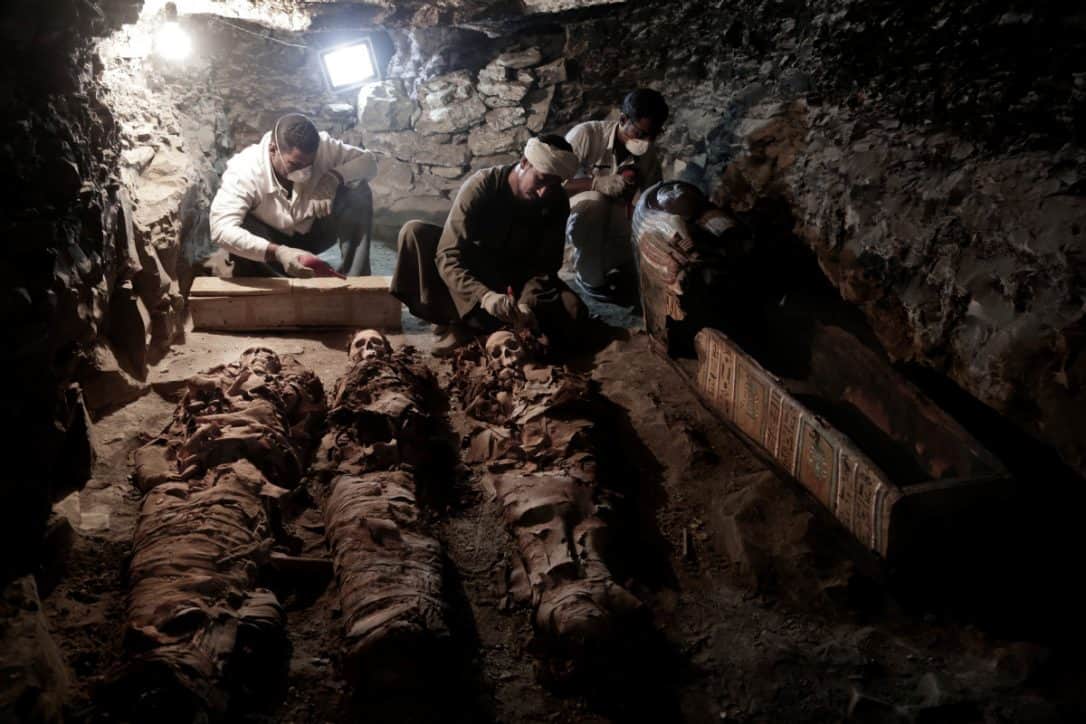
This newly uncovered tomb is located on an area on the west side of the river Nile where many noblemen and top government officials are buried. This is a fascinating discovery and it will certainly spark a boost in interest in Egypt tour packages for those who are intrigued by ancient history.
Also, inside the tomb there are three mummies. It is not clear whether or not these bodies are connected to Amenemhat. They were found within a burial shaft leading off the main chamber, according to a report by the Egyptian Ministry of Antiquities. It took five months of digging by a team of Egyptian archeologists to uncover this tomb.
Archeologists have determined that the mummies were of a woman and her two children. The mother died when she was about 50 years old – she had a bacterial bone disease according to the tests. Her two sons were in their 20s and 30s and their bones were in good condition. These human remains will allow scientists and researchers to discover an incredible amount of information about the diseases that they were suffering from as well as many other aspects of their lifestyle.
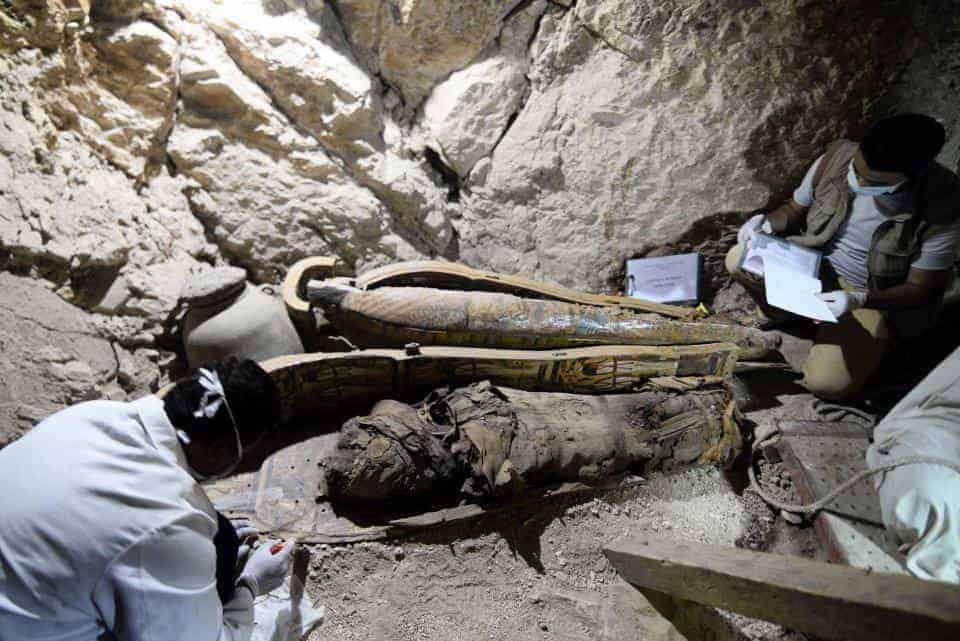
As well as the mummies, the archeological team has found many other important discoveries including coffins, funerary combs, jewellery, statuary and funerary mask. These items were placed in Egyptian tombs with the belief that the deceased would use them in the afterlife.
The excitement and media buzz around this tomb will generate a boost in interest in Egypt guided tours to discover the ancient secrets this fascinating country has to offer.
Who Was the Owner of This Tomb?
It is believed that the tomb belonged to Amenemhat, which means “Amen (the god) Is In the Forefront,” and his wife Amenhotep. While Amenhotep is usually a name used for a man, the team discovered several references within the tomb that suggested she was the wife of Amenemhat. Amenemhat worked as a royal goldsmith and his work would have been dedicated to an ancient Egyptian sun god.
At the entrance of the tomb there is a sandstone statue (which has undergone a lot of damage over the years) which pictures Amenemhat with his wife. Between their legs is a small figure of their son. This is unusual, as the daughter is the one usually pictured in this place. If the family had no daughters, it was customary to depict their daughter in law in this way – so a son pictured in a sculpture like this is unusual.
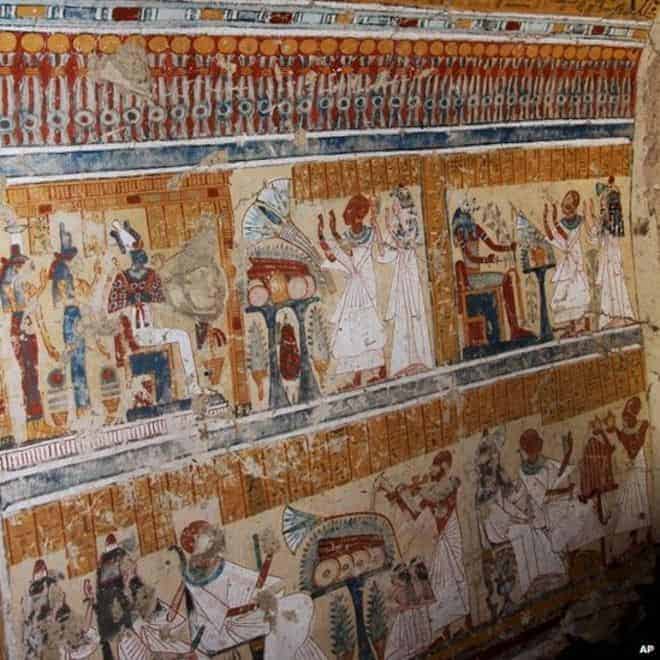
Although the original owners of the tomb were from the 18th dynasty in Egypt, it appears that this tomb was reused in the 22nd and 21st dynasties as well – which explains why sarcophagi from many different eras can be found here. (Also, it has thought that people have entered this tomb and looked around in ancient times, which may be why the heads of the mummies were uncovered.)
Why Were Tombs So Important in Ancient Egypt?
The most elaborate tombs of any ancient culture in the world belong to the Egyptians. The reason why the ancient Egyptians put so much time, effort, money and craftsmanship into building beautiful and richly embellished tombs is due to their beliefs surrounding the afterlife.
After all, in these ancient times diseases such as polio, tuberculosis and parasitic infections were rampant and most people did not live past the age of 40. Death was looming over them all the time, so it’s easy to understand why the Egyptians would be fascinated with death and the idea of an afterlife where they could exist for all eternity free of disease and pain.
In order to achieve this immortality, the body needed to be carefully prepared and stored so that the spirit could be reunited with it in the afterlife. Plus, the dead person needed ample provisions for the journey to the afterlife and the blessing of magic spells, amulets and rituals. Usually there were also carvings and paintings depicting the deceased at different points in their life. If they made the dangerous journey from this world to the next, the deceased would become an “akh” or spirit and they would live forever among the gods.
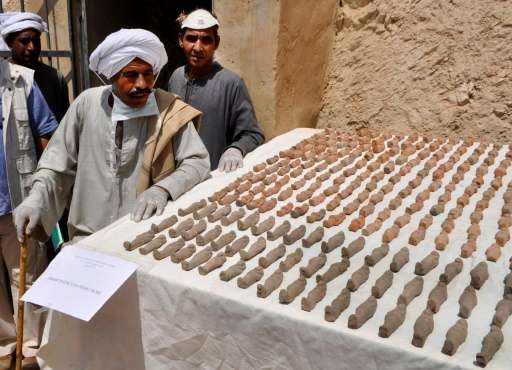
So, tombs were built to protect the dead and provide them with all of the necessities they would need in the afterlife. The lower classes would have much more humble burials, but the higher class people in society would have no expense spared when creating their elaborate final resting places. On Egypt tours it is possible to learn more detail about the burial process and how these tombs were created.
Luxor is one of the most impressive places in Egypt to see splendid and remarkably well preserved tombs. This area is home to the Tombs of the Nobles which are the burial places of some of the most powerful people in this ancient city. Another tomb was recently discovered in Luxor – a tomb of an 18th century dynasty judge in April of 2017.
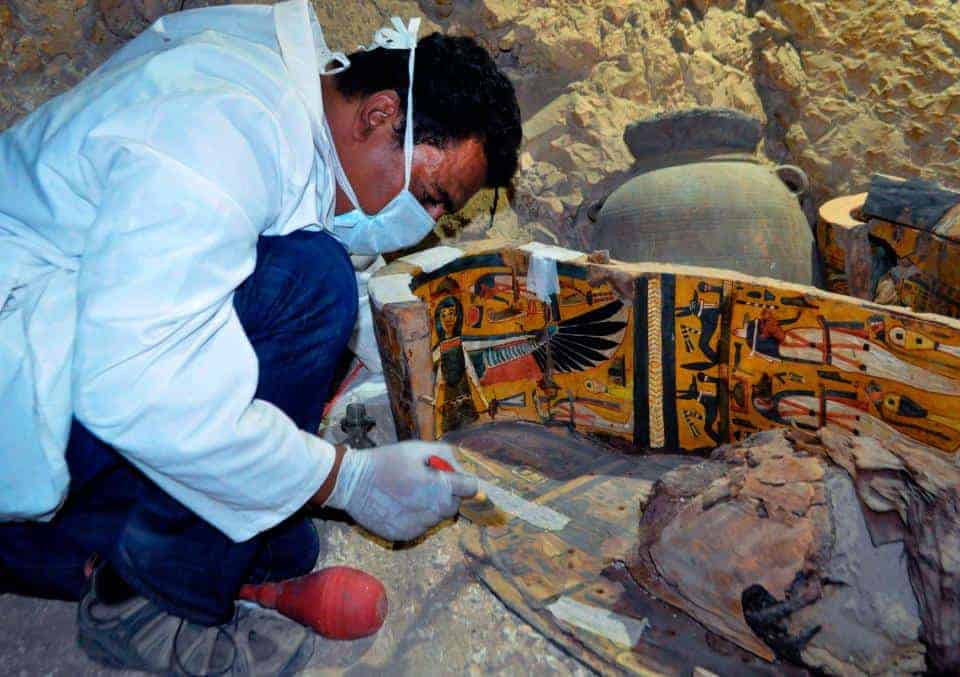
Peering into these ancient burial sites gives us a fascinating insight into how the ancient Egyptians lived and died. In a way, they did manage to achieve immortality – we still know their names and faces today thousands of years later.
One of the best ways to explore Luxor on your Egypt trips is to visit with a knowledgeable guide who is well-versed in Egyptian history. They will be able to tell you fascinating stories of Egypt’s past and explain the meaning of the complex and beautiful symbols and artwork on the tombs.
